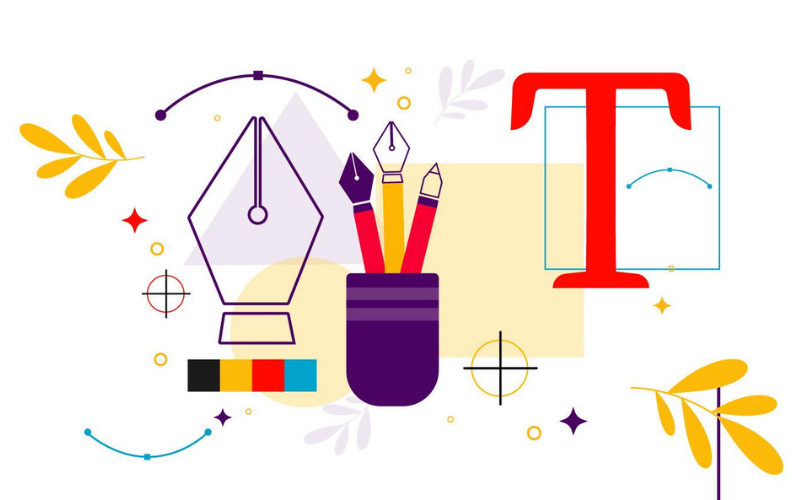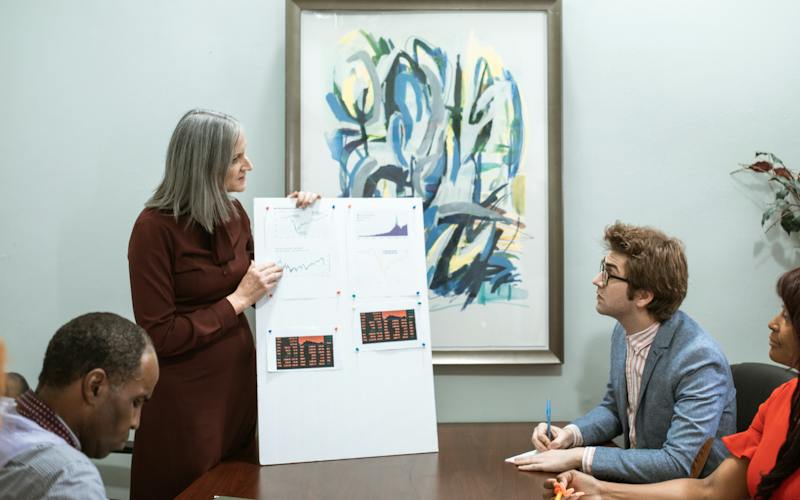Logos are essential for giving your business a distinctive look. Certain aspects of the process require a lot of practice and experience. This experience comes with working with a variety of different brands. However, behind it all, there are specific golden rules that all best logo design services providers should be aware of.
Branding is a priceless asset when the perfect logo is matched with a suitable product. Like, take the example of the Nike swoosh. But how do these logo designs gain popularity? There are certain things that every successful logo contains that we will discuss in this article. If you are looking for new ways to redesign your clients’ logos, you have come to the right article.
10 Things You Can Do to Redesign Your Clients Logo
1. Do the groundwork
One of the exciting aspects of being a logo designer is that every project allows you to learn something new. Each client is unique. People do different jobs in the same profession. Before starting your logo design, you should always start with some groundwork. You should get to know your client and their product. This will help you in selecting the best design for your business. It will also make it easier to reach a consensus on your logo design later.
Make sure to inquire as to why your client their brand exists. Ask them about their brand message and what they want to convey from the logo. Moreover, what distinguishes them from other brands? What do they value the most, and why are they there? Some of these questions may appear to be pointless. But they can be challenging to answer. This will lead to additional inquiries about your clients’ businesses.
2. Use a sketchpad
You can redesign your clients’ logos by using some traditional tools like sketching pads. You can always use digital tools for the final product, but a sketchpad can be a wise choice when the design is still a draught. Using a sketchpad allows you to take a break from the glare of brightly lit pixels. It will also allow you to capture design ideas more quickly and freely. You have complete freedom to explore because there is no digital interface in the way. And if you wake up in the middle of the night with an idea, you don’t want to forget. You can scribble it down at once.
Sketching lets, you place shapes exactly where you want them. And you can always digitize your marks later. When you’re describing design ideas to clients before digitizing a mark, it’s also a good idea to share some sketches. This can help them visualize the result without being distracted by typefaces and colours, which can cause clients to dismiss an entire concept. However, don’t disclose too much information; only your best ideas should be shared.
3. Start in black and white:
As previously stated, colour is an essential part of branding. But it can also be a distraction. It can make it hard for the client to consider the logo’s basic concept. You can redesign your clients’ logos. By taking out the colour until later in the process, you can concentrate on the idea of your logo design rather than an element that is typically much easier to change. It will improve your logo designing skills and save you a lot of time.
Whenever you think about any famous logo, the first thing that comes to your mind is the structure and the colours. Whether it’s an apple bite or four linked circles in a horizontal line, it’s all about the lines, shapes, and the idea itself. It’s impossible to save a bad idea with a fun colour scheme, but a good idea will always be good regardless of color.
4. Keep your logo design appropriate:
Redesign your clients’ logo by staying relevant to the concepts, values, and activities it represents. An elegant typeface is more suitable for a restaurant than a children’s nursery. A colour scheme of fluorescent pink and yellow is unlikely to engage male adults.
You already know these things, and they may appear self-evident, but appropriateness is more than this. The more appropriate your designs will be, the easier it will be to sell them to a client.
5. Make your logo design easy to recall:
Make it a golden rule to keep every logo design that you create memorably. This will help you redesign your clients’ logo. A good logo allows a brand to capture the potential customer’s mind. Despite the competition, it manages to distinguish itself from other brands.
But now the question is, how can you make your logo memorable? Simplicity is the watchword in this situation. A simple logo can often be remembered after only a few seconds of viewing.
A trademark must be focused on a single ‘story’ or concept. In most cases, this means it should have a simple design.
6. Strive to make a difference:
You should make your logo stand out from your competitors. You can achieve this by using different typography and color palettes. This will add a unique twist to your logo design.
However, just because there is so much similarity in the marketplace doesn’t mean your job has gotten easier. Not many people are willing to go against the ongoing trend. Most people would want you to follow whatever is in trend. But very few will like to take the risk of going beyond. That’s why demonstrating the appropriateness of your concept and imagination in your design portfolio is one good way to convince your client.
7. Consider a more comprehensive brand identity.
Usually, we don’t see a logo in its entirety. It’s commonly seen on a website, a poster, business cards, app icons, and various other supports and applications. To redesign your clients’ logo, add relevant touchpoints in your client presentation to demonstrate how the logo appears when seen by potential customers. When you’re stuck, taking a step back and looking at the big picture can help.
The bigger picture in terms of design is every possible item on which your logo design could appear. Always consider how the identity functions without the logo.
8. Don’t be too literal
A logo doesn’t need to depict what a company does; it’s often preferable if it doesn’t. More abstract designs are often more durable. Historically, you’d display your factory or, if it was a family-run business, a heraldic crest, but symbols don’t convey what you do. They make it clear who you are instead.
You should create something new and different. The mark’s meaning in the eyes of the public is added later when companies connect their work and the shape of the mark.
9. Create visual salience:
Colour is an essential tool in a designer’s toolbox, and logo design is no exception.
This is referred to as “visual salience” in the design world. It’s a great term to impress your designer friend in casual conversation. And it’s also a great way to create a memorable logo.
Using a ‘pop’ of colour is easy to create visual salience.
10. Don’t be afraid to rejig the wheel.
Use patterns, overlapping shapes, and contrasting colours to make modern logos. The “C” layered over the semi-circle helps to elevate this design, and the contrasting blue and purple indicate that this company is bold and forward-thinking. It’s acceptable to take risks and try new things.
Also Read: Good Business Ideas For Housewives in India With Low Cash




